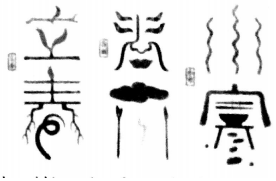题目内容
2.China has more than 30 intangible cultural heritage(非物质文化遗产) recognized by the UNESCO,including paper-cutting,the Dragon Boat Festival,Peking Opera,acupuncture(针灸) and so on.The organization adopted a decision that China's"The Twenty-Four Solar Terms"(二十四节气) should be put on the Representative List of the Intangible Cultural Heritage of Humanity in 2016in Ethiopia.The Twenty-Four Solar Terms,knowledge of time and practices in agriculture,starts from the Beginning of Spring and ends with the Greater Cold,moving in cycles.It developed through thee observation of the sun's annual movement in China.In ancient time,the method of tugui,earth sundial(日暑),was used to measure the shadow of the sun for determining the solar terms.
The Twenty-Four Solar Terms came into being and developed in close relationship with Chinese agricultural production.At the initial stage of agricultural development,people began to explore the seasonal rules in the agricultural production to meet the needs in seeding,harvesting and other activities.Gradually,they formed the concept of"seed in spring,grow in summer,harvest in autumn and store in winter".During the spring and autumn periods,the agricultural production was highly influenced by the seasonal changes,thus forming the concept of Solar Terms.
As a traditional Chinese knowledge system of time with a history of thousands of years,the Twenty-Four Solar Terms clearly expresses the concepts of respect for nature,and harmony between man and nature.Created by Chinese ancestors,it has functioned as a complete set of weather calendar(日历) to guide the agricultural production in China.It has also been introduced into North Korea,Japan and other neighboring countries and still used in Japan.The Chinese heritage has provably influenced the people's way of thinking and behaving and will continue to be an important carrier of Chinese cultural identity.
5.According to the first two paragraphs,the Twenty-Four Solar TermsC.
A.was used to measure the shadow of the sun
B.has not been listed as one intangible cultural heritage of humanity
C.repeats from the Beginning of Spring to the Greater Cold every year
D.is the best intangible cultural heritage recognized by the UNESCO
6.We can learn from the text thatB in China in the past.
A.the Twenty-Four Solar Terms only influenced spring and autumn
B.the Twenty-Four Solar Terms had something to do with agriculture
C.people cared about the changes of weather just for fun
D.agricultural production highly influenced the seasonal changes
7.We can infer from the text that the Twenty-Four Solar TermsD.
A.is an agricultural calendar merely used in China
B.is strongly influenced by North Korea and Japan
C.is scarcely connected with natural reles
D.is part of traditional Chinese culture.
分析 本文向我们介绍了二十四节气,它是中国传统文化的一部分,在过去的中国,人们根据二十四节气进行农业生产,至今,它也对中国人民有非常重要的意义.
解答 5.C;细节理解题.根据文中"The Twenty-Four Solar Terms,knowledge of time and practices in agriculture,starts from the Beginning of Spring and ends with the Greater Cold,moving in cycles."(二十个四节气,对农业的时间和实践的认识,从春季开始,以更大的寒冷结束,周而复始),可知二十四节气是每年从春天开始到更冷,故选C.
6.B;细节理解题.根据文中第三段第一句"The Twenty-Four Solar Terms came into being and developed in close relationship with Chinese agricultural production."(二十四节气"是与中国农业生产密切相关而产生和发展起来的)以及第三段以下内容可知二十个四节气与农业息息相关在过去的中国.故选B.
7.D;细节理解题.根据文中"As a traditional Chinese knowledge system of time with a history of thousands of years,the Twenty-Four Solar Terms clearly expresses the concepts of respect for nature,and harmony between man and nature."(作为几千年历史的中国传统知识体系,二十节气明确表达了尊重自然、人与自然和谐的理念),可知二十四节气是中国传统文化的一部分.故选D.
点评 本文考察学生的细节理解能力以及细心程度,只要抓住文章的关键词,采用寻读的方法查找细节,就能找到正确答案.

